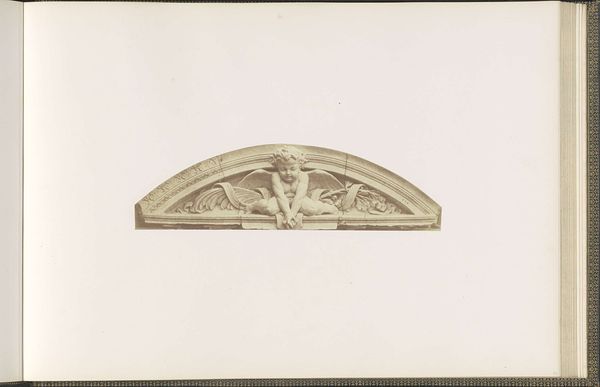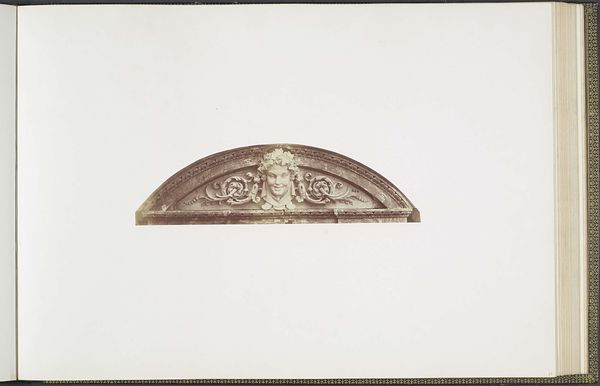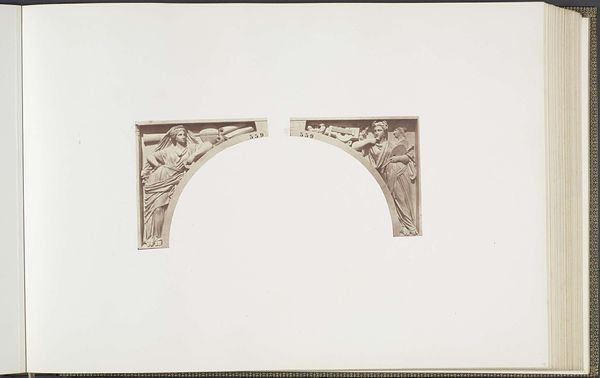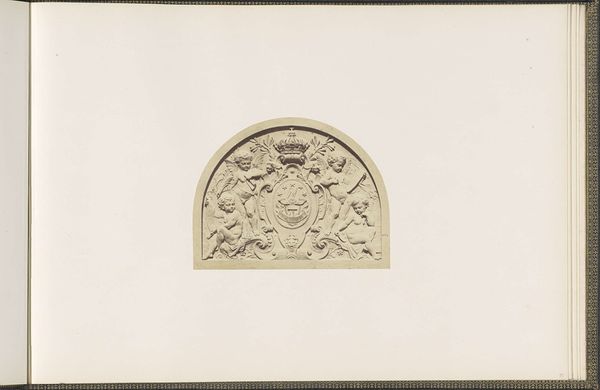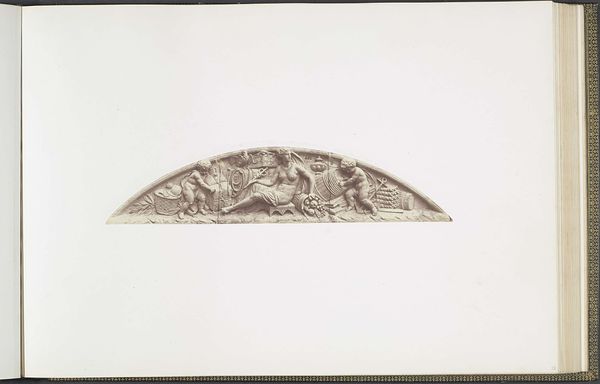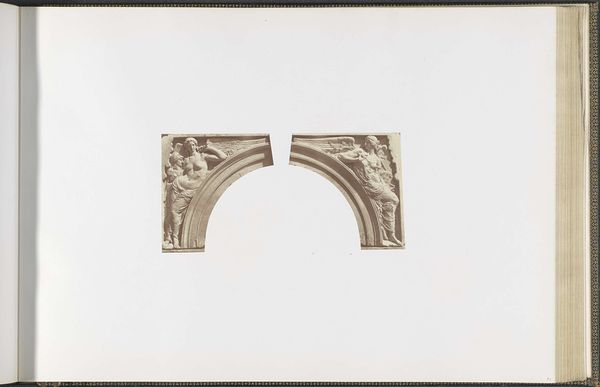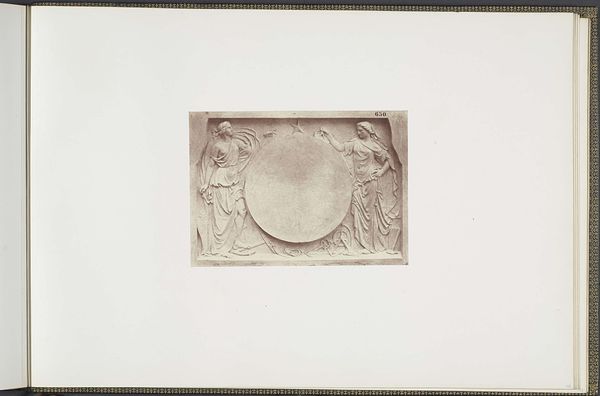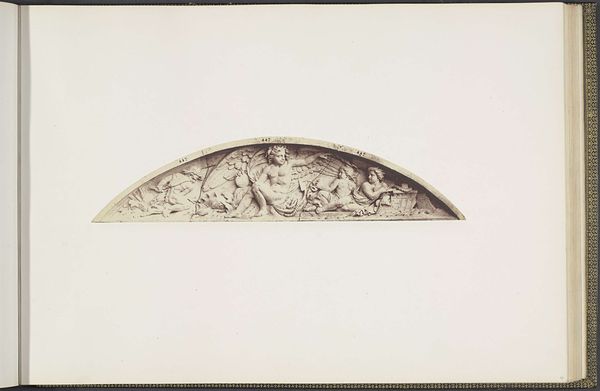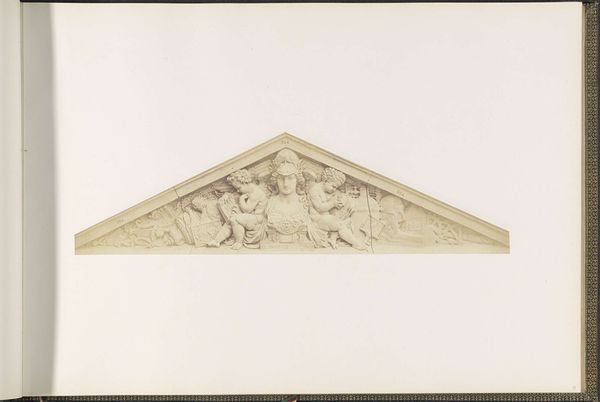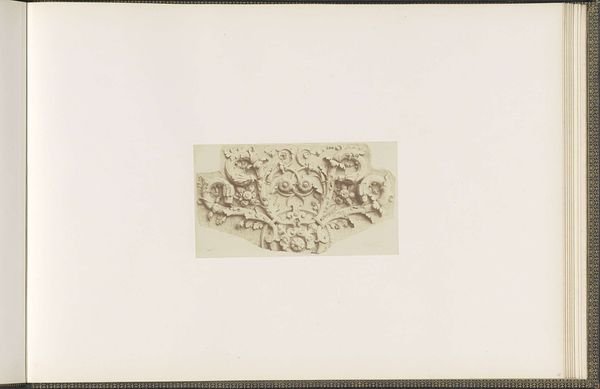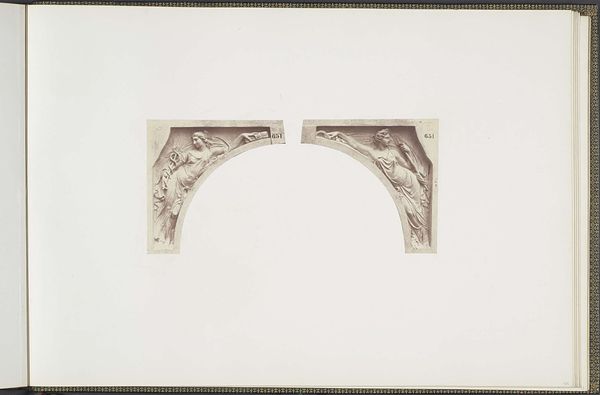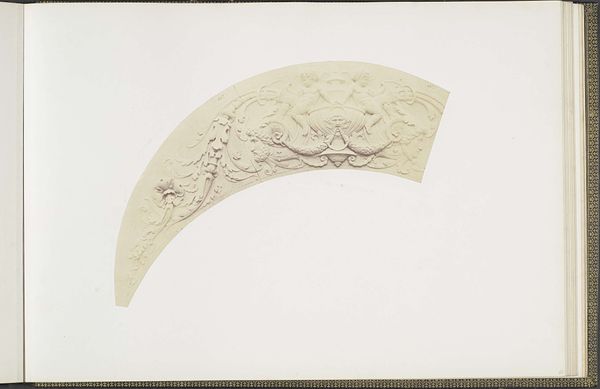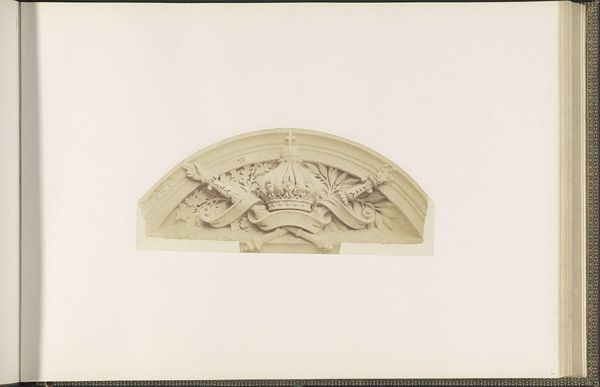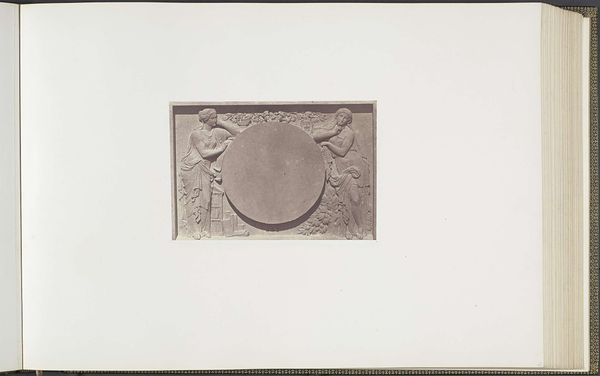
Gipsmodel voor een versiering van het Palais du Louvre: "Les Arts et les Sciences" door Jean-Baptiste Revillon c. 1855 - 1857
0:00
0:00
edouardbaldus
Rijksmuseum
relief, photography, sculpture, plaster, albumen-print
#
relief
#
landscape
#
figuration
#
photography
#
sculpture
#
plaster
#
history-painting
#
academic-art
#
albumen-print
Dimensions: height 378 mm, width 556 mm
Copyright: Rijks Museum: Open Domain
Curator: Looking at this albumen print by Edouard Baldus, there's a striking formality. The image captures Jean-Baptiste Revillon’s plaster model, "Les Arts et les Sciences," intended as decoration for the Palais du Louvre around 1855-1857. The texture looks incredibly smooth. Editor: It certainly evokes a sense of power, doesn’t it? The way that cherubic figure dominates the center feels emblematic of an elite's self-perception at the height of their influence during that period. Curator: Precisely! It employs very clear symbolism typical of academic art. Notice the framing with symmetrical figures, possibly representing the arts and sciences as the title suggests. The details of laurel wreaths add layers to the idealized composition. Editor: Thinking about it from a different angle, Baldus’s choice to document this particular relief might be considered a deliberate act. It speaks to the French obsession with legacy and enshrining achievements during a time of significant sociopolitical tension. Curator: Indeed. Consider Baldus’s background and the role photography played in documenting and promoting public works and cultural heritage at the time. His style, very neat, enhances the relief's sculptural details; highlights emphasize form and contour, thereby celebrating artistic prowess. Editor: Right, so we must reflect critically here—who gets to define art, science, and history? In its original placement at the Louvre, the piece visually reinforced a hierarchy; however, its preservation through Baldus allows for us to now contest those historical presumptions. Curator: I appreciate your viewpoint. However, I feel the piece primarily emphasizes an aspirational ideal of harmony. The clarity and proportion achieve perfect formal balance which draws viewers. I believe our contemporary focus sometimes obscures the original intent of celebrating progress. Editor: And maybe that celebration, frozen in plaster, is now a question to ask and to not just observe. Ultimately, whether intended as celebration or critique, what is on display compels our contemporary reevaluation about art, heritage, and how both interact within societal systems.
Comments
No comments
Be the first to comment and join the conversation on the ultimate creative platform.
